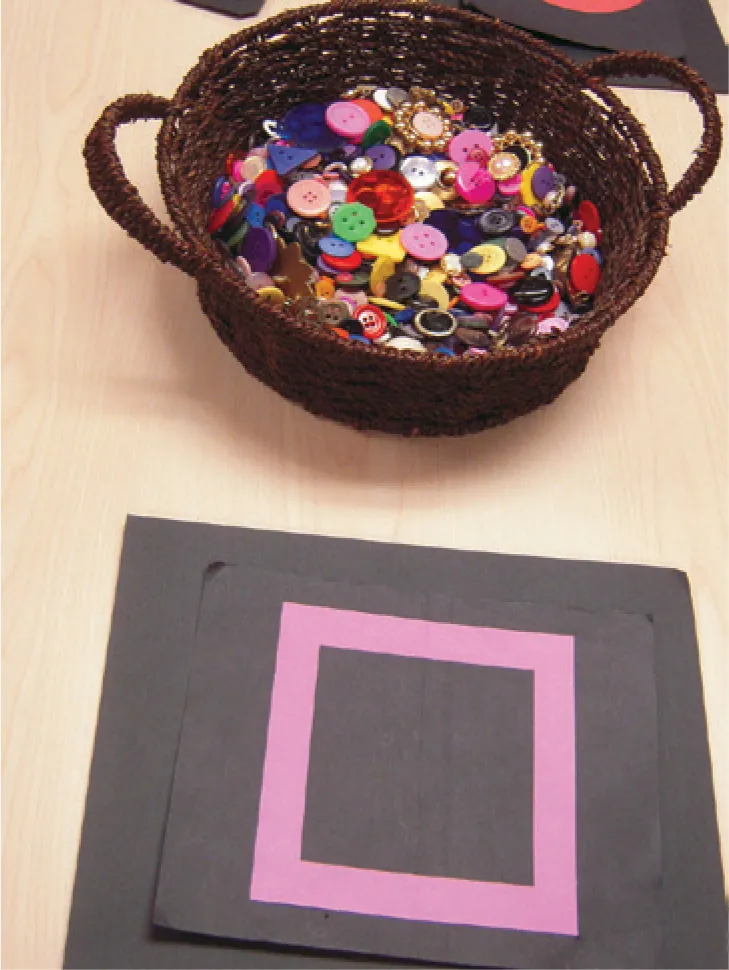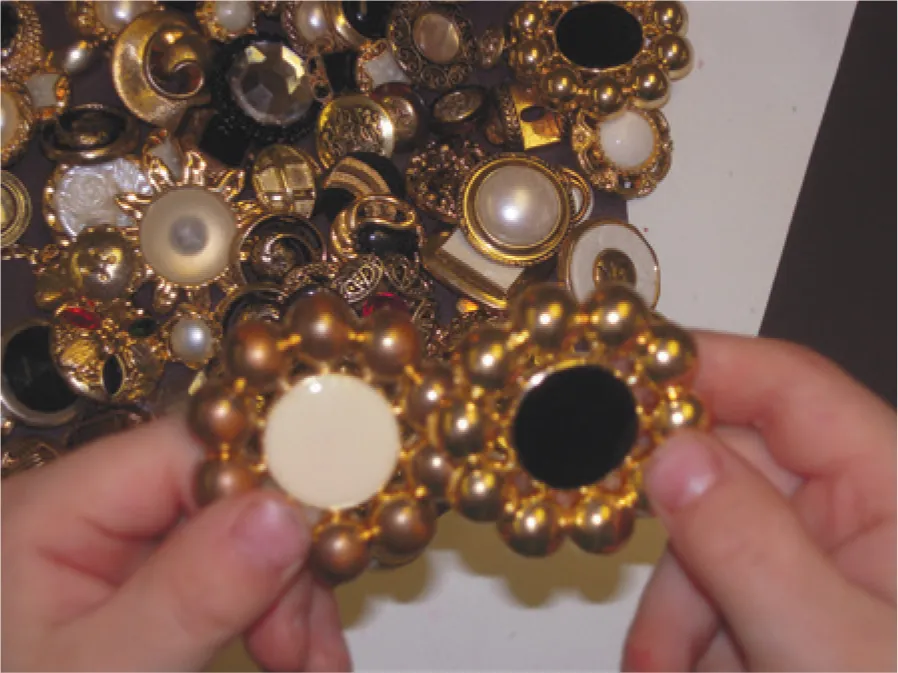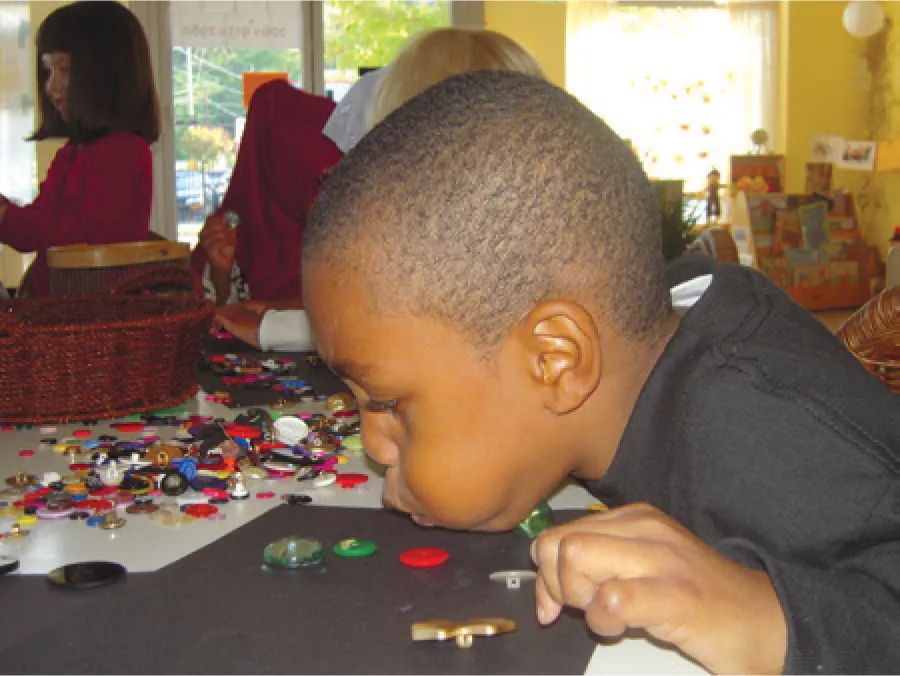
eBook - ePub
The Art of Awareness
How Observation Can Transform Your Teaching
Deb Curtis, Margie Carter
This is a test
Buch teilen
- English
- ePUB (handyfreundlich)
- Über iOS und Android verfügbar
eBook - ePub
The Art of Awareness
How Observation Can Transform Your Teaching
Deb Curtis, Margie Carter
Angaben zum Buch
Buchvorschau
Inhaltsverzeichnis
Quellenangaben
Über dieses Buch
With new chapters and updates from early childhood leaders Deb Curtis and Margie Carter invite early childhood educators to learn the art and skill of observation.The art of observing children is more than merely the act of watching them—it is also using what you see and hear to craft new opportunities in your classroom. This resource provides a wealth of inspiration and practice. It will help early childhood educators learn to observe in new ways, witness children's remarkable competencies as they experience childhood, and find new joy in their work with children.The third edition updates include
- New information on schema theory including a list of the definitions of schemas
- Updated stories that reflect schema explorations and focus on observing children's ability to get along
- Added information on identity development and the anti-bias goals
- New chapter on observing children using their bodies
- New QR codes to videos to continue learning
- Updates on technology and approaches to keeping observations at the center of required assessments
Häufig gestellte Fragen
Wie kann ich mein Abo kündigen?
Gehe einfach zum Kontobereich in den Einstellungen und klicke auf „Abo kündigen“ – ganz einfach. Nachdem du gekündigt hast, bleibt deine Mitgliedschaft für den verbleibenden Abozeitraum, den du bereits bezahlt hast, aktiv. Mehr Informationen hier.
(Wie) Kann ich Bücher herunterladen?
Derzeit stehen all unsere auf Mobilgeräte reagierenden ePub-Bücher zum Download über die App zur Verfügung. Die meisten unserer PDFs stehen ebenfalls zum Download bereit; wir arbeiten daran, auch die übrigen PDFs zum Download anzubieten, bei denen dies aktuell noch nicht möglich ist. Weitere Informationen hier.
Welcher Unterschied besteht bei den Preisen zwischen den Aboplänen?
Mit beiden Aboplänen erhältst du vollen Zugang zur Bibliothek und allen Funktionen von Perlego. Die einzigen Unterschiede bestehen im Preis und dem Abozeitraum: Mit dem Jahresabo sparst du auf 12 Monate gerechnet im Vergleich zum Monatsabo rund 30 %.
Was ist Perlego?
Wir sind ein Online-Abodienst für Lehrbücher, bei dem du für weniger als den Preis eines einzelnen Buches pro Monat Zugang zu einer ganzen Online-Bibliothek erhältst. Mit über 1 Million Büchern zu über 1.000 verschiedenen Themen haben wir bestimmt alles, was du brauchst! Weitere Informationen hier.
Unterstützt Perlego Text-zu-Sprache?
Achte auf das Symbol zum Vorlesen in deinem nächsten Buch, um zu sehen, ob du es dir auch anhören kannst. Bei diesem Tool wird dir Text laut vorgelesen, wobei der Text beim Vorlesen auch grafisch hervorgehoben wird. Du kannst das Vorlesen jederzeit anhalten, beschleunigen und verlangsamen. Weitere Informationen hier.
Ist The Art of Awareness als Online-PDF/ePub verfügbar?
Ja, du hast Zugang zu The Art of Awareness von Deb Curtis, Margie Carter im PDF- und/oder ePub-Format sowie zu anderen beliebten Büchern aus Education & Early Childhood Education. Aus unserem Katalog stehen dir über 1 Million Bücher zur Verfügung.
Information
Chapter 1 A New Way of Being with Children: An Overview of the Study Sessions
It takes practice for us to recover this ability to see, or before that, the gift of wanting to see. For so many years we have been learning to judge and dismiss—I know what that thing is, I’ve seen it a hundred times—and we’ve lost the complex realities, laws, and details that surround us. Try looking the way the child looks—as if always for the first time.
—CORITA KENT AND JAN STEWARD

As you read the following story about Karina’s classroom, consider the role that observation plays in her teaching. How does her close attention to the children’s knowledge and interests influence what happens in her classroom?
As Karina sets up the room for her day with children, she decides to offer buttons in a new way. She takes them off the shelf and places them on one of the tables as an invitation for the children to discover. She puts the buttons in a basket and lays out some pieces of construction paper with different shapes glued on them. Karina is in the early stages of shifting her teaching away from the practice of making all table activities teacher-directed lessons. She’s very curious about what the children will do when they discover these materials she’s placed on the table.
The first few children who approach the table seem hesitant. They ask Karina what they are supposed to do. She smiles and says, “You are welcome to play with the buttons. See what you can discover.” As these girls sit down, several others join them and the fun begins. The children sift through the buttons, describing what they are discovering and finding different ways to set them on the paper. Karina stays close by, noticing how the children are investigating the buttons and periodically describing what she sees them doing. She does her best to avoid asking questions such as “What color is that?” or “How many buttons do you have?” It’s new for her just to take a few notes and photos of things the children are doing and saying. She’s eager to learn more about their interests and the experiences that come out during their play.

The first thing that strikes Karina is the variety of ways children explore the buttons. Some seem quite focused and serious. Others are exuberantly grabbing, relishing the abundance of buttons. Some children have begun sorting and classifying the buttons by color, size, or shape. One child starts a treasure hunt, trying to find all the big buttons with “gold petals on the outside.” Another child picks up random buttons one at a time and then methodically places them on her paper. One of the quieter solo workers at the table creates what is clearly the representation of a person.

After putting buttons on his paper, one child discovers that if he blows on a button, it will scoot across the table. He is thrilled with his discovery, calling out, “Look! Look what I did! Look what I did! It’s flying. Flying up. That one jumped.” Karina comes over for a closer look. “Wow, you really made a discovery. You can use your breath to move the air so it will move the buttons.” Before long, others join him in this activity. They invent a button-blowing game, making up rules as they go along. Karina is amazed that the children have used the buttons in ways that never would have occurred to her. At one point, she turns her camera around and shows one of the children a series of pictures she has captured. It is the progression of ideas the child has had over the last twenty minutes. The girl is eager to describe what she was doing in every photo.


Karina realizes she is puzzled by something. She notices that none of the children seem to make use of the shapes on the paper for their button work. In fact, several children have turned the paper over so the blank side is facing up. She wonders what this means about their exploration of space and lines. She can’t wait to talk with her assistant teacher about all her observations so they can consider how they might offer the buttons next time.

This small glimpse of Karina’s work with children is rich with the elements of the teaching approach presented in this book. Working with children in this way is quite different from focusing on cookie-cutter curriculum activities. It also goes beyond traditional observation practices, in which teachers collect data primarily for the purpose of assessment and measuring outcomes. While this is a valid reason for observing, it is more limited than what we as authors are suggesting in this book. In fact, what you see in Karina is a teacher engaged in ongoing professional development. She is practicing close observation, flexible thinking, risk-taking, and working without a known outcome. She demonstrates the ability to move in and out of analysis while staying in the present moment. This ability helps her use the children’s exploration as a source of planning, not to mention inspiration.
When approaching observation in this open-ended way, teachers must view children as competent creators of their own understandings. They see children as individuals who deserve the time and attention needed for their experiences to unfold with deeper meaning. Teachers like Karina see the richness of these childhood moments and value children’s perspectives and pursuits. Teachers who use this approach spend their time observing children, working to uncover their point of view and understandings. They do not spend time planning lessons and filling out developmental checklists. They use their observations to guide their responses and ongoing planning. They then draw on them for filling out developmental data or school-readiness assessments.
Reread the story, study the photos, and notice the specific things Karina is doing in her teaching practice.
- Karina provides open-ended materials for the children to explore. She understands the kinds of materials that engage children. She chooses materials with texture, beauty, complexity, and a range of possibilities for use.

- She offers materials with attention to order and aesthetics, which will call forth the children’s interest and help them focus on the possibilities.

- Karina observes closely and documents the details of ordinary moments of the children’s explorations and actions. She sometimes spontaneously shares her observations with the children by describing what she is seeing and showing them photos of their work.

- Karina shares her delight in what the children are doing. She asks open-ended questions and avoids questions that seek a particular answer, but rather keeps a curious, open mind, wondering why the children are pursuing particular activities.

- Even when a child uses the buttons in an unexpected way, such as blowing them, Karina admires his ingenuity. She does not offer a rule.

- Karina is eager to share her observations with other teachers and the children’s families to see if their perspectives can suggest additional ideas about what is occurring and what might be offered next.


Why Study Sessions?
Because of the many demands and distractions teachers face, learning to pay close attention to children requires systematic study and ongoing practice. This book offers you that opportunity. The study sessions were originally designed as a college course to counter the notion that observing children is a cumbersome task. The sessions offer you an organized system that will help you become aware of children in a new way. Through practice, you will discover that developing the art of awareness is one of the most stimulating and nourishing things you can do for yourself and for children. It will make your job easier and more enjoyable.
You will find that these study sessions are not designed as checklists to use or facts to learn. Rather, they offer new ideas, activities, and experiences to help you invent a different way of be...